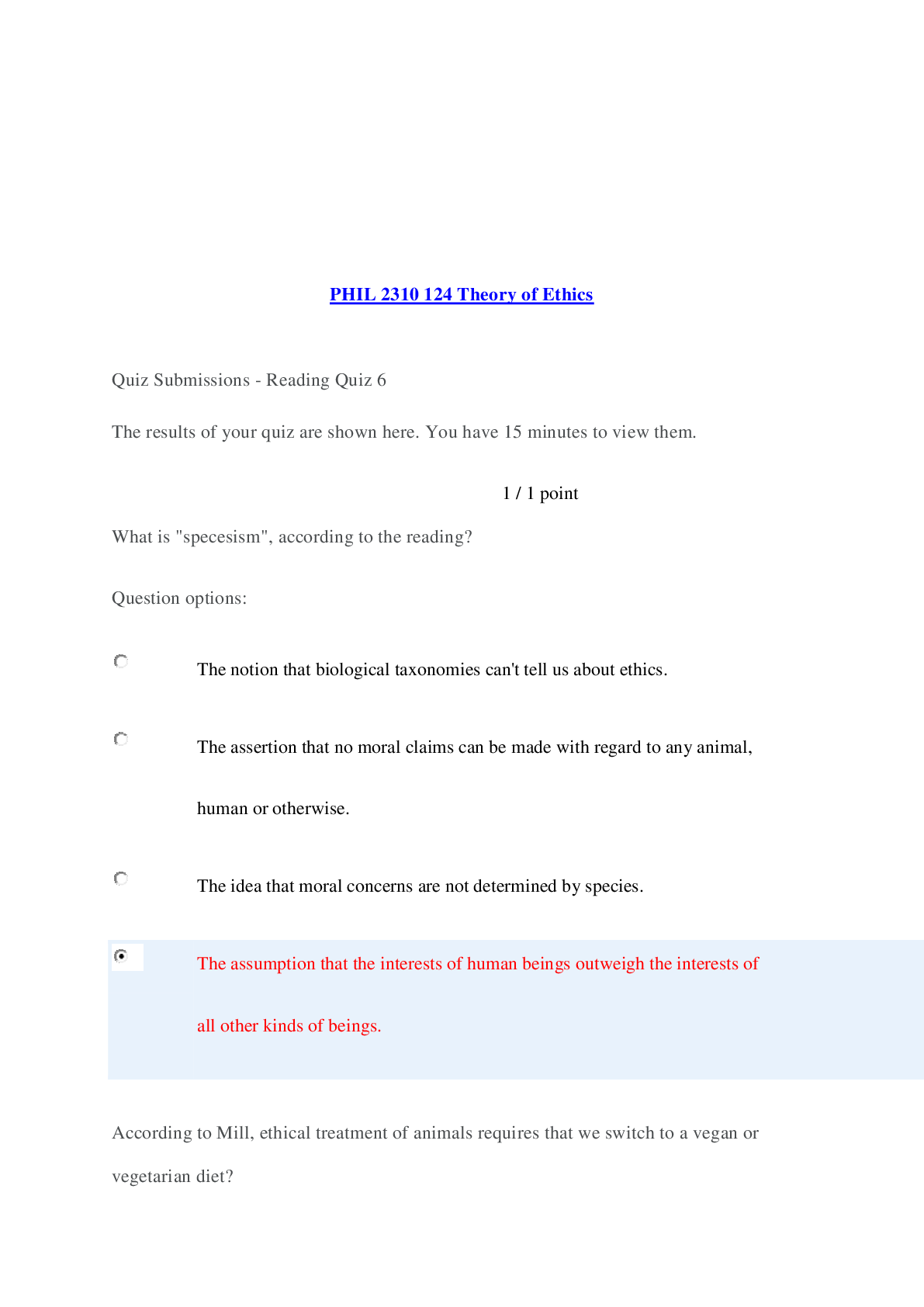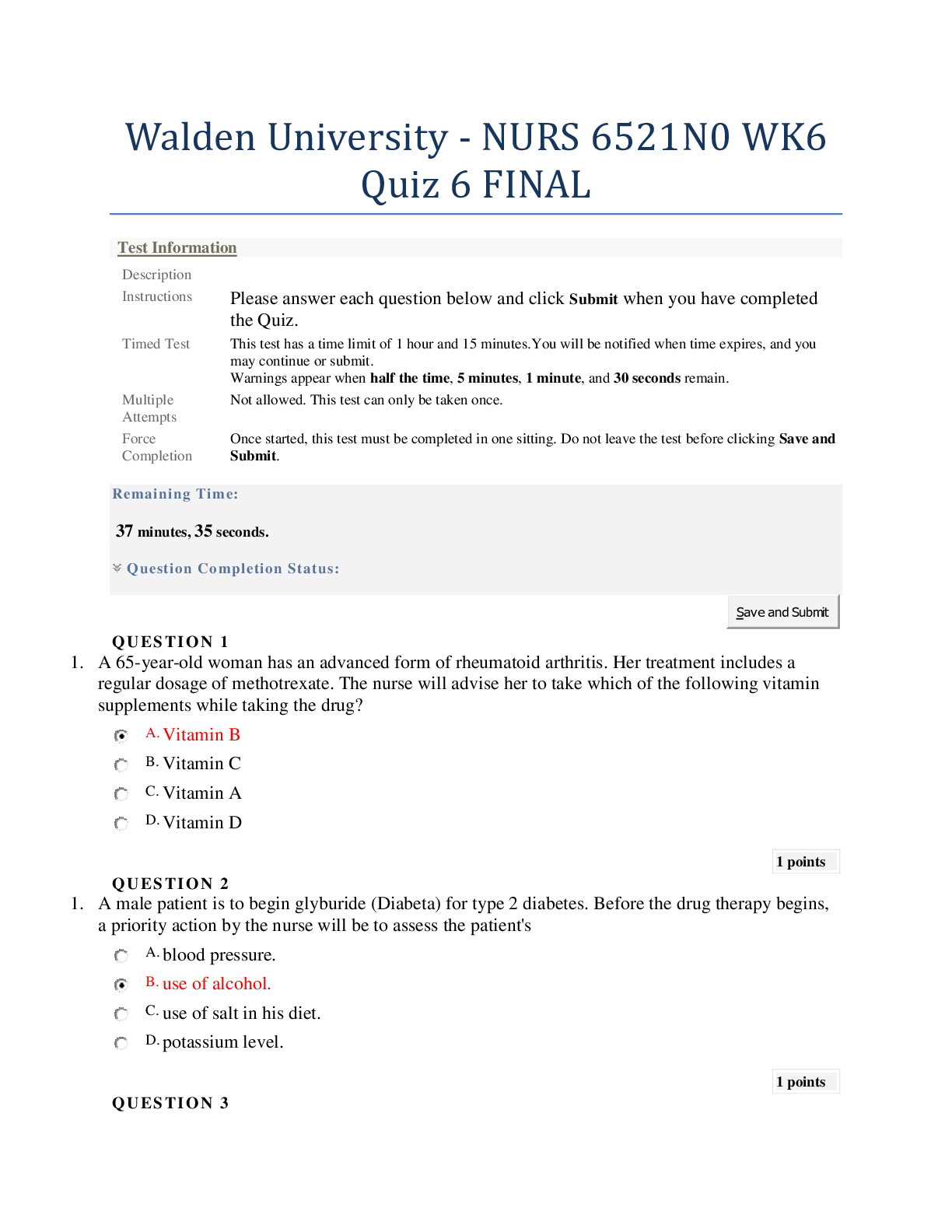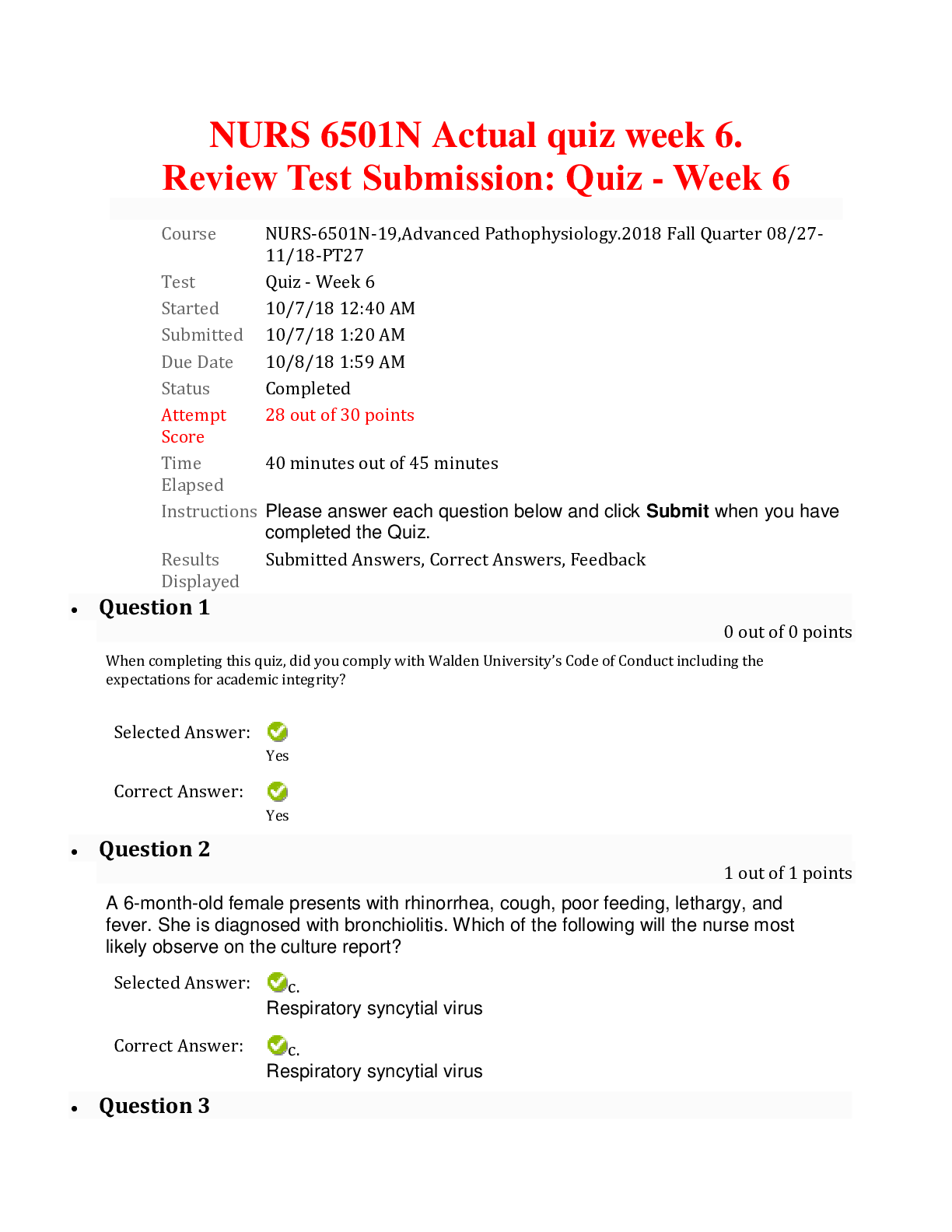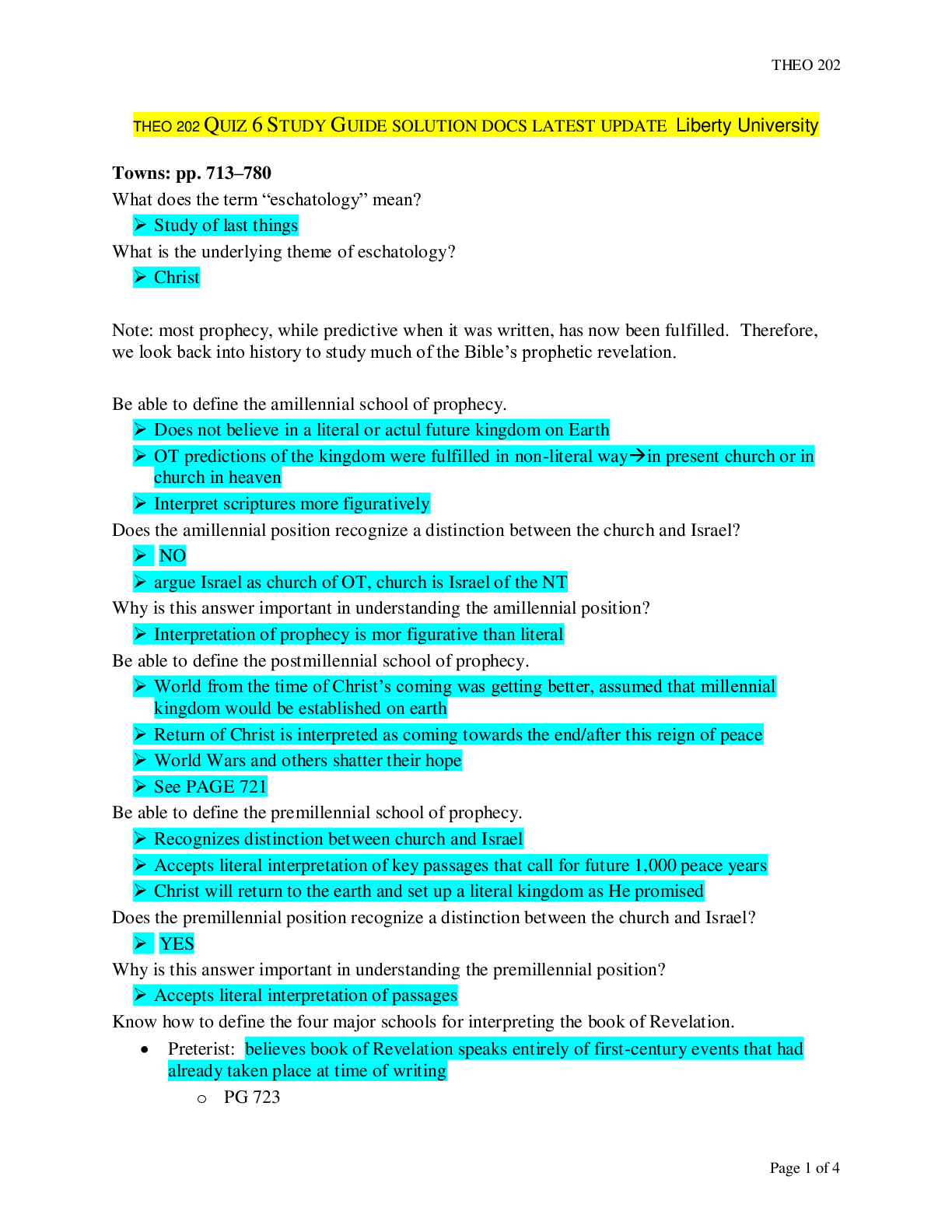Film Studies > QUESTIONS & ANSWERS > FILM 240 Media and Popular Culture (ASO) W20 _ Quiz 6 -Arizona University. Grade is: A+ Grade Update (All)
FILM 240 Media and Popular Culture (ASO) W20 _ Quiz 6 -Arizona University. Grade is: A+ Grade Updated
Document Content and Description Below
FILM 240 Media and Popular Culture (ASO) W20 _ Quiz 6 -Arizona University. Question 1 (1 point) We should study issues of narrative and genre because choices have been made (by writers, directors, ... producers, etc.) to shape our experience of the world through a work of popular culture. We should ask ourselves why these people made those choices – to whose benefits? – and what is the likely impact of these choices? Question 1 options: True False Question 2 (1 point) Narrative theory, genre theory and reception theory help us to see how might we go about interpreting the meaning of texts by taking into account the economic structures and political regulations that shape the interaction between popular cultural producers, texts, and readers. Question 2 options: True False Question 3 (1 point) Associate the following statements with the appropriate method of interpreting texts (systems of signs) Question 3 options: According to this method, systems of classification that enable us to group texts together for comparison purposes provide a solid ground against which we can measure and delight in innovation. These systems direct our attention to matters of execution and variation (tension between convention and invention). According to this method, readers are not just passive consumers, they are active producers of meanings. They played a central role in decoding messages, and, depending on their desires, knowledge and social experience, they might decode texts in unpredictable ways. The recognition that all texts are intersexual (they refer to different other texts) and polysemous (they can carry different meanings) led to the development of this method.3 This method offers a starting point for analysis that draws our attention to the rules for the selection and arrangement of story elements within a specific system of classification that enable us to group texts together for comparison purposes. According to this method, most works of popular culture move from a state of equilibrium, through disruption and delay, to a new state of equilibrium. This consistent pattern provides means to uncover some of the central themes and meanings in a work of popular culture. According to this method, representations are the embodiment of the intentions of an author, creator, or speaker, and, if we can just figure out what that person intended to say, we can decipher the meaning of the text. This method posits a rather static conception of communication as a kind of hypodermic transfer whereby the author injects meaning into the reader via the text. Scholars using this method are asking how the elements of a particular story are arranged in a particular way to achieve a particular meaning. The commutation test is a thought experiment where you replace one element of a text with a similar but different instance of it. For example, substitute different characters into and out of the role of hero to learn what social codes or ideologies are being preferred in a text. This method is particularly problematic as an approach to mass-produced cultural forms because it cannot account for the corporate nature of said production. Hundreds of people may participate in the creation of a film or television program, so who should we say is the author? The scriptwriter, the producer, the director, the cinematographer, the actors or the editor? Each of these people contributes to the form of the final product, but can any of them be said to control the process so absolutely as to be the author of it? Whose intentions matter under these conditions? Why praise the director of a film if the producer has the final word, for example? The commutation test allows us to see how social codes and system of classification that enable us to group texts together for comparison purposes interact and how that interaction favours certain interpretations while discouraging others.(4 genre theory) According to this method, since most of a popular text meanings come from “outside” the work itself and that not everyone has the same culture, all popular culture texts carry many possible meanings 1. Narrative theory 2. The intentional approach 3. Reception theory 4. Genre theory ________________________________________ 3 of 3 questions saved [Show More]
Last updated: 10 months ago
Preview 1 out of 3 pages
Instant download
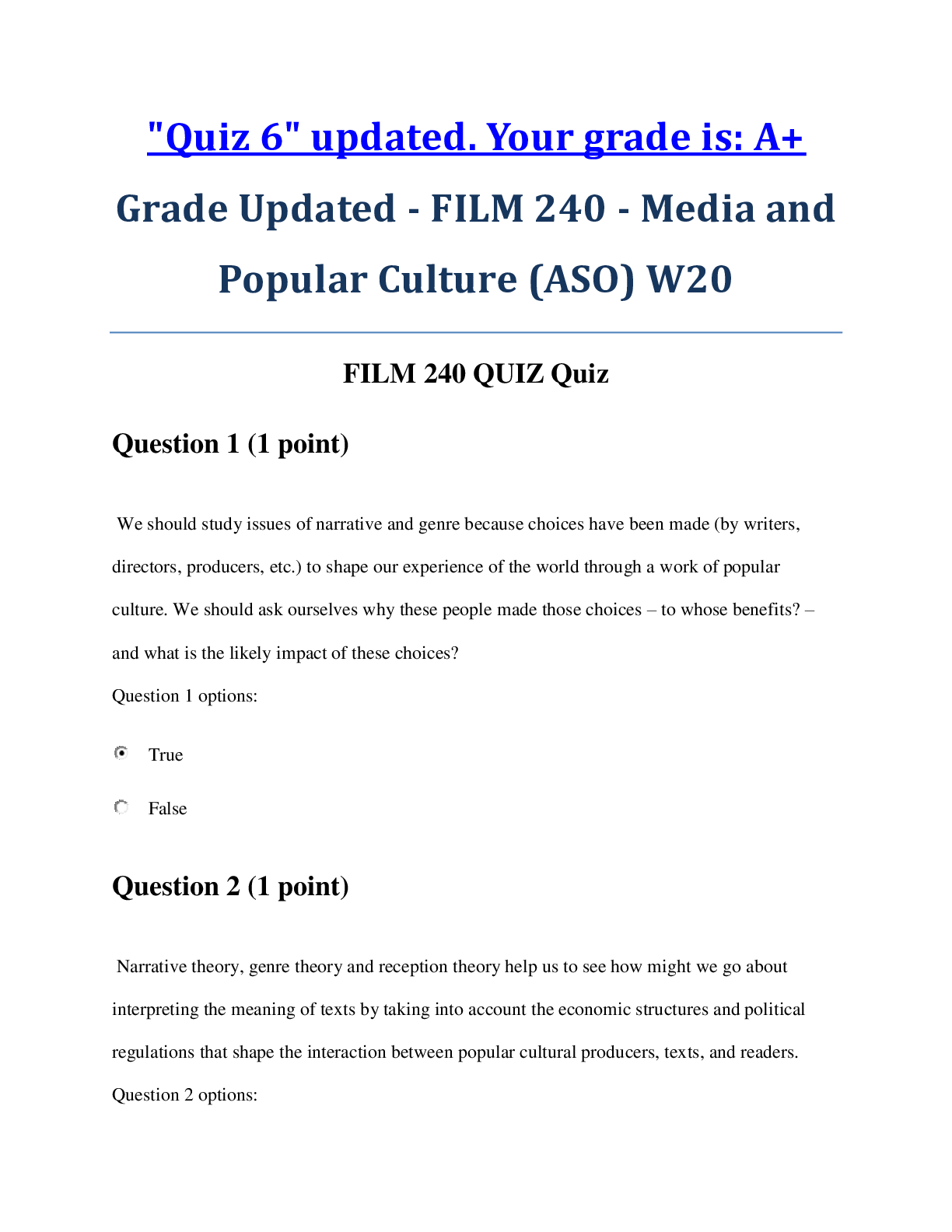
Buy this document to get the full access instantly
Instant Download Access after purchase
Add to cartInstant download
Reviews( 0 )
Document information
Connected school, study & course
About the document
Uploaded On
Feb 13, 2020
Number of pages
3
Written in
Additional information
This document has been written for:
Uploaded
Feb 13, 2020
Downloads
2
Views
167














